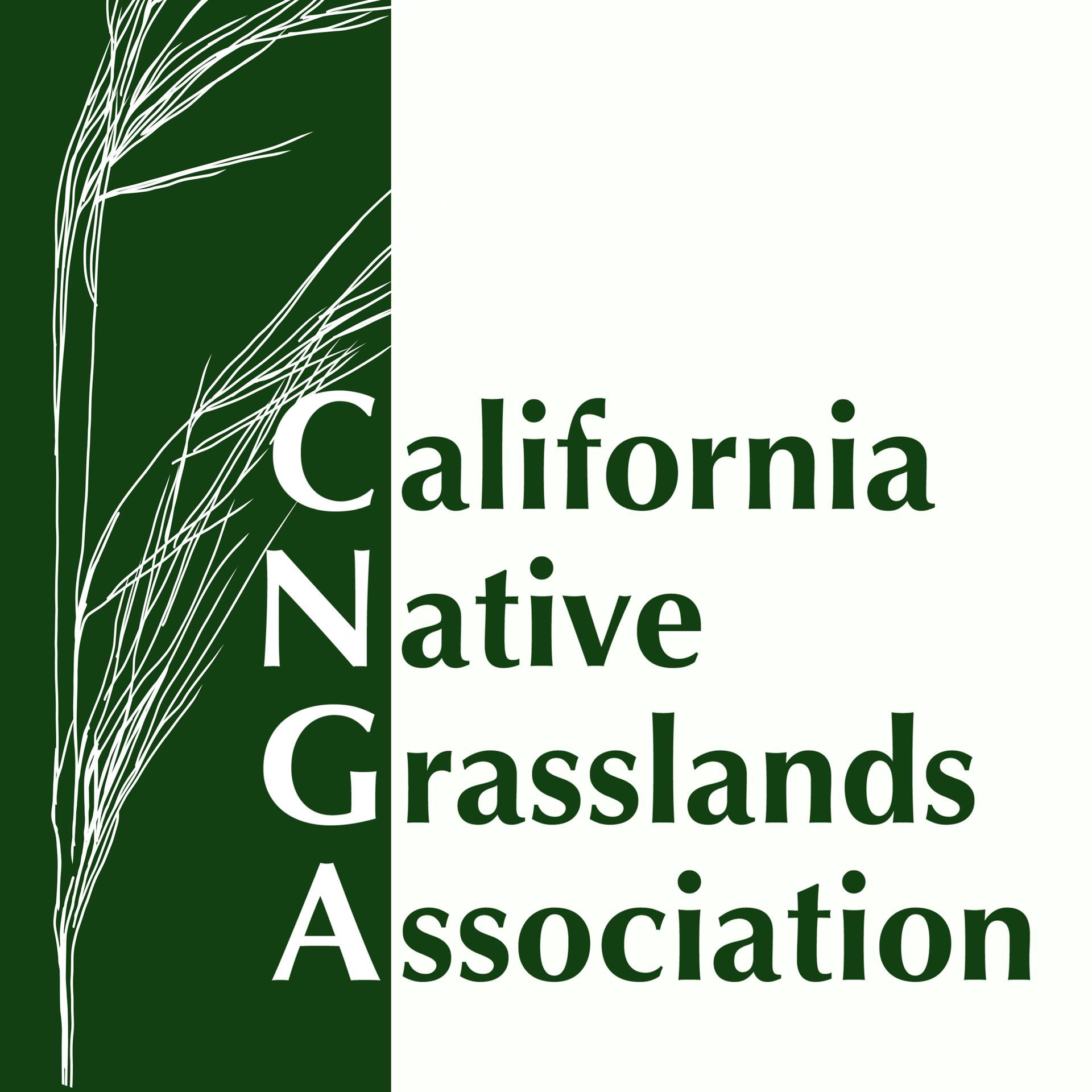
The Only Organization Working Exclusively to Conserve and Restore
California's Native Grasslands
Rangelands
CNGA is a signatory on the California Rangeland Conservation Coalition's Rangeland Resolution. We recognize the critical importance of California’s rangelands, which support important ecosystems and other natural resources and are the foundation of the ranching industry. "Take half, leave half" standard for defoliation by grazing and for fire breaks to lower impact to below-ground roots, nutrient-cycling, and regrowth of plants, especially our remaining and very important native plants, is supported by this paper.
Field Guide for Common California Rangeland and Pasture Plants 2016, with forage information on both natives and non-natives |
Point Blue Conservation Science Tools & Guidance: Farming and Ranching
|
Livestock grazing supports native plants and songbirds in a California annual grassland. PLoS ONE 12(6), 2017: By Sasha Gennet, Erica Spotswood, Michele Hammond, James W. Bartolome. An 8-year study in central California finds livestock grazing can be compatible with or support grassland bird conservation. --Michele Hammond is a current serving on the CNGA Board of Directors. |
Assessing Virtual Fencing Technology for Improving Rangeland Vegetation Structure Heterogeneity. Timothy Olsen (Oklahoma State University), Bryan Murray (Oklahoma State University Main Campus)Top of Form Monday, 9 December 2024 Poster Presentation at American Geophysical Union AGU24: What’s Next for Science. Washington D.C. December 9-13, 2024 Abstract. Many grassland pollinators and birds benefit from heterogeneity in vegetation structure. Physical fences and long-term livestock grazing can negatively affect this heterogeneity by creating harsh boundaries. Virtual fencing (VF) technology is a promising option for livestock management that reduces reliance on physical fences by allowing managers to remotely plan and establish virtual boundaries using GPS collars that deliver auditory and electrical cues. VF technology may be valuable in protecting patches of habitat for pollinators and birds by limiting livestock access. We compared the spatial patterning of vegetation structures along physical fences and virtual fences. We predict that implementing VF technology will lead to gradual transitions in vegetation structure. Our experimental design consisted of six 50-m × 20-m sites at the Oklahoma State University Bluestem Research Range, sampled in summer 2024. Three sites crossed a physical fence while the other three crossed a VF, which consists of an exclusion zone, boundary (auditory) zone, and grazing area. In situ data included vegetation height along three transects per site and imagery collected via unoccupied aerial systems (UAS) at a spatial resolution of 1 cm. We used the imagery to create structure-from-motion (SfM) height models, then applied the ground-truth data to correct the models. We assessed variations in vegetation height between sites using Analysis of Variance. The results of our study indicate that VF boundaries create more gradual transitions in vegetation height, and overall greater heterogeneity, in rangeland structure compared to a physical fence. Mean height values of the physical fence were 35.8±1.1 cm on the non-grazed side and 16.2±0.5 cm on the grazed side (F = 287.62, p < 0.001). At the VF sites, vegetation height was decreased from a mean of 46.5±1.0 cm in the exclusion zone, to 34.7±1.3 cm in the boundary zone, to 22.4±0.6 cm in the grazed area (F = 6.23, p = 0.002). The findings of this study indicate that VF technology holds great promise for protecting and conserving habitat for many grassland pollinator and bird species. Since the auditory zones provide the greatest variation in standard error, it is capable of improving heterogeneity and creating mosaic landscapes, that lack harsh boundaries that physical fences may lead to. |
Vikuk V, CA Young, ST Lee, P Nagabhyru, M Krischke, MJ Mueller, J Krauss. 2019. Infection Rates and Alkaloid Patterns of Different Grass Species with Systemic Epichloë Endophytes. Applied and Environmental Microbiology Aug 2019, 85 (17) e00465-19; DOI: 10.1128/AEM.00465-19
James W. Bartolome, Barbara H. Allen-Diaz, Sheila Barry, Lawrence D. Ford, Michele Hammond, Peter Hopkinson, Felix Ratcliff, Sheri Spiegal, and Michael D. White "Grazing for Biodiversity in Californian Mediterranean Grasslands," Rangelands 36(5), 36-43, (1 October 2014). https://doi.org/10.2111/Rangelands-D-14-00024.1 Smith LS, S Panslasigui, E Spotswood 2020. Livestock grazing and its effects on ecosystem structure, processes, and conservation. San Francisco Estuary Institute Publication #1011. |
Statistical Consideration for Monitoring California Annual Rangelands Larsen R, JG Robins, KB Jensen, M Shapero, K Striby, L Althouse, M George, M Horney, D Rao, A Hernandez, R Dahlgren, J Bartolome, 2023. Statistical considerations of using the 1-ft2 quadrat for monitoring peak standing crop and residual dry matter on California annual rangelands. Rangelands 45 (5): 102-108. ISSN 0190-0528, https://doi.org/10.1016/j.rala.2023.06.002. (https://www.sciencedirect.com/science/article/pii/S0190052823000263) Keywords: residual dry matter; peak standing crop; environmental monitoring; bare ground; quadrat On the Ground Peak standing crop (PSC) and residual dry matter (RDM) are the primary measures of production and grazing intensity on California's annual rangelands. One of the most common methods of monitoring forage metrics is to clip 1-ft2 quadrats. The USDA Forest Service, Bureau of Land Management, universities, and other land managers have been using this methodology since the 1930s. We used best linear unbiased predictors (BLUEs) to determine 95% confidence intervals for PSC and RDM. For both PSC and RDM, as the number of samples taken increased from 1 to 10, the predictive ability also significantly increased. We found no evidence of increased predictive power past 10 samples. |